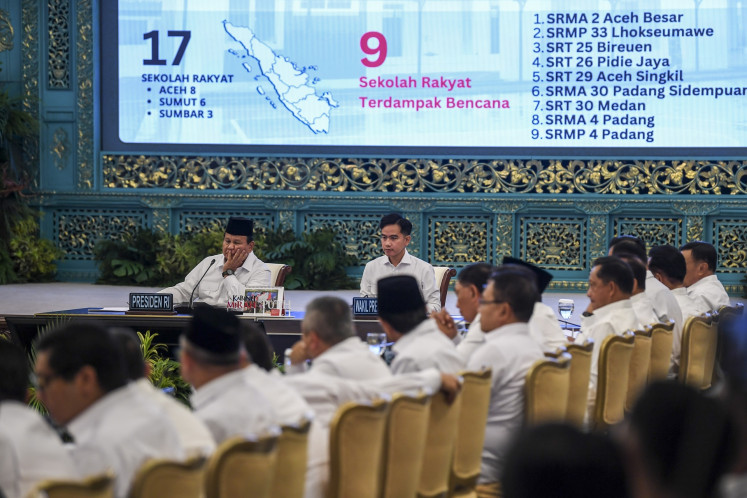Popular Reads
Top Results
Can't find what you're looking for?
View all search resultsPopular Reads
Top Results
Can't find what you're looking for?
View all search resultsSaudi oil production disruption could cost RI $3.1 billion
A disruption cutting global oil supply by more than 5 percent is not just a worst-case scenario after Saudi Arabia announced that 50 percent of its oil production capacity had gone offline after a series of drone attacks last weekend. While we are praying that a confrontation can be avoided, the disruption would be costly for Indonesia.
Change text size
Gift Premium Articles
to Anyone
A
disruption cutting global oil supply by more than 5 percent is not just a worst-case scenario after Saudi Arabia announced that 50 percent of its oil production capacity had gone offline after a series of drone attacks last weekend.
The attacks crippled an oil facility in Abqaiq that produces 7 percent of the global oil supply and the Khurais field that produces 1 percent of the global oil supply. The magnitude of the disruption is even worse than the effect of Iraq’s invasion of Kuwait or the Iranian Revolution.
While the attack has caused a major disruption to the global oil supply, it was not the first time that oil facilities have been targeted in recent months. Earlier this year, several oil tankers in the Gulf were sabotaged. The attacks showed a major geopolitical crisis was brewing in the region.
Moreover, Saudi Arabia also faces security and political problems in the restive Eastern Province, where Shiites form a majority and where discontent against the Saudi state has been brewing for years. Unfortunately for the world, Saudi Arabia, especially the Eastern Province, produces 12 percent of global oil supply, making the country a critical link in the global oil supply.
The risk is even higher when considering the possibility of a major confrontation between Saudi Arabia and its allies and Iran. A major geopolitical crisis in the Gulf region could affect 33.4 percent of global oil supply. While we are praying that a confrontation can be avoided, the disruption would be costly for Indonesia.
If the disruption lasts to the end of this year, it will cost Indonesia between US$1.1 trillion and $3.1 trillion in oil imports. Additionally, oil subsidies will increase between Rp 1.9 trillion ($135 million) and Rp 5.1 trillion.
This depends on how much time the Saudi national oil company Aramco needs to resume production and how the Organization of Petroleum Exporting Countries (OPEC) will respond. If Aramco needs at least a month to restore production capacity and OPEC fails to agree to increase its production quota, there will be a monthly oil supply deficit of 150 million barrels, which could drive oil prices up to $100 per barrel.


















